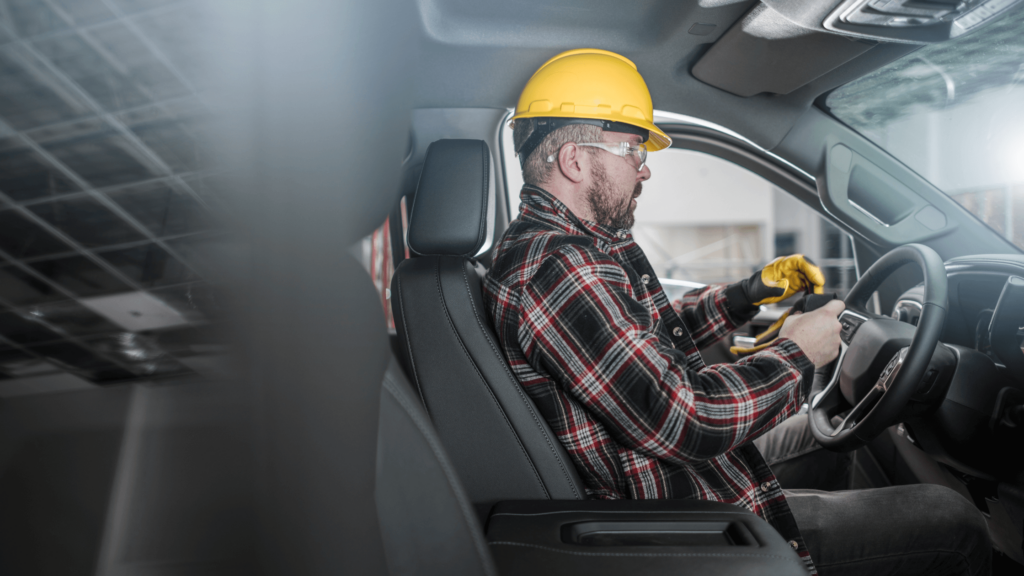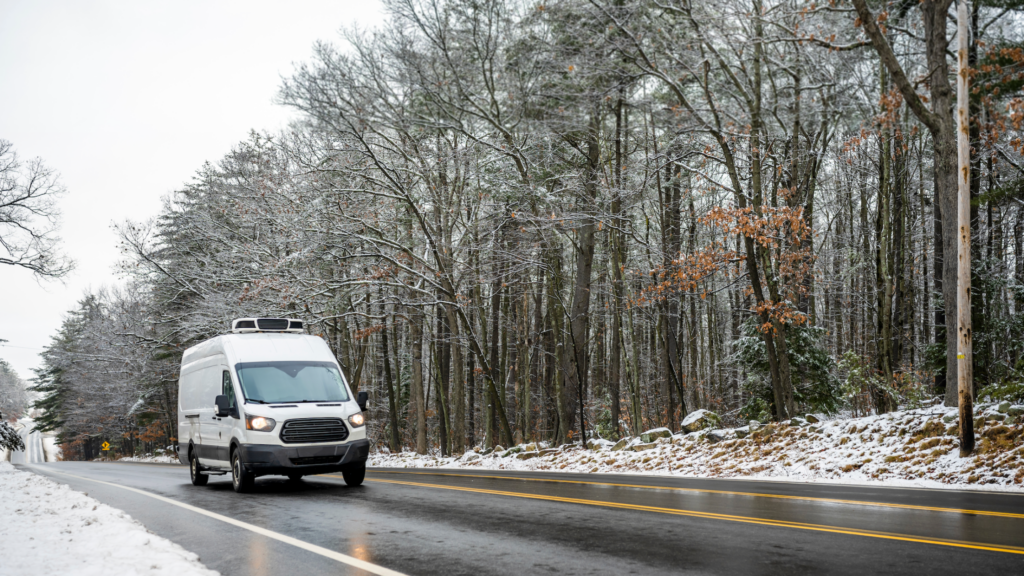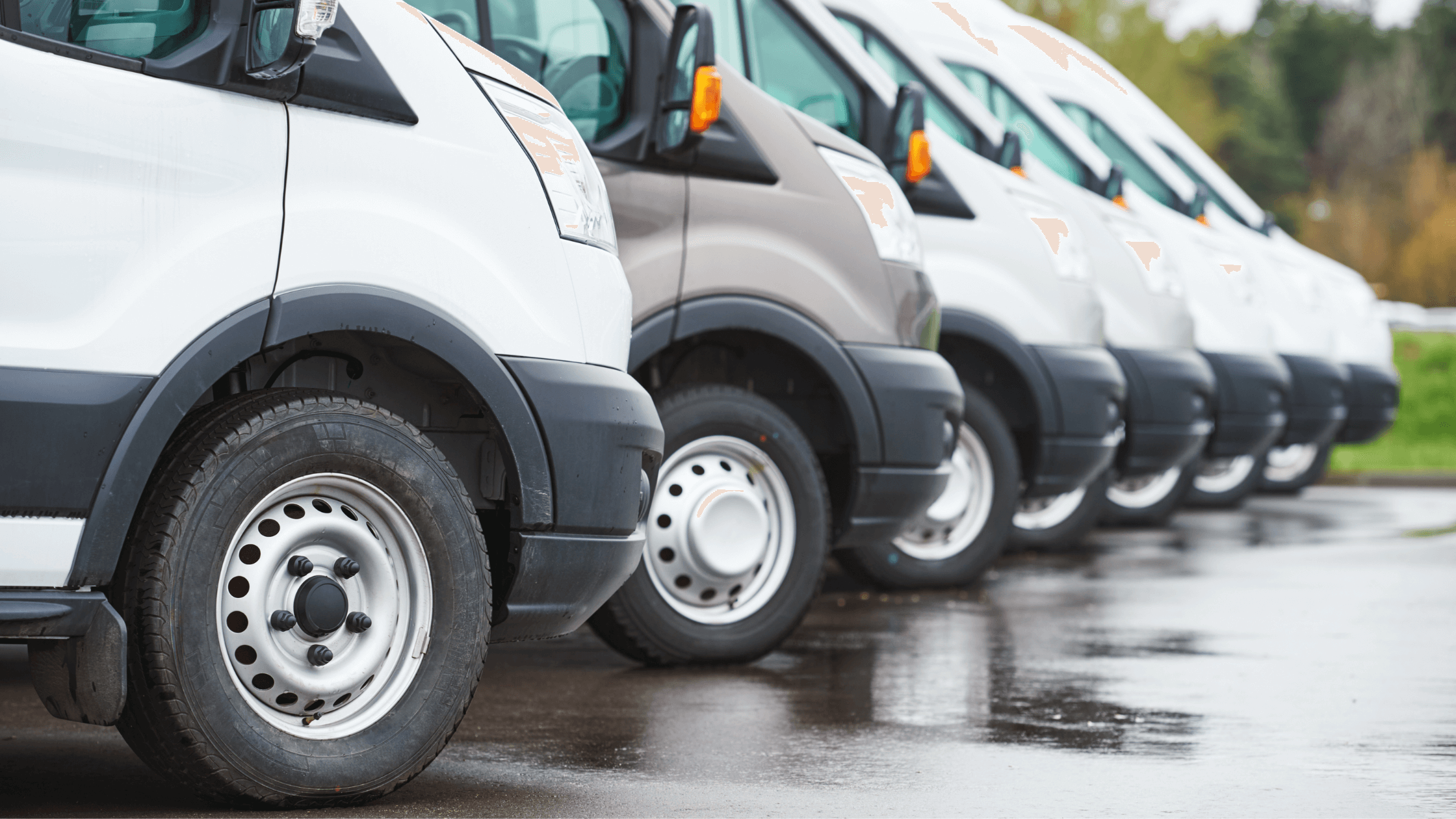When contractors think about safety, the job site is often the first thing that comes to mind. But what about the journey to and from those sites? Whether transporting tools, materials, or an entire crew, proper commercial auto safety requires you to understand insurance to keep your assets safe play and avoid costly setbacks.
Quick look
- Commercial vehicles are involved in 20% of road fatalities in Canada despite making up only 8% of collisions, highlighting the serious risks to road safety.
- Poor road safety leads to project delays, medical expenses, and increased insurance premiums, directly impacting contractors’ profitability and operations.
- Fleet safety programs, dash cameras, and telematics systems help improve driver accountability and reduce risks associated with commercial driving.
- Comprehensive commercial auto insurance protects contractors from financial losses, covering accidents, theft, and damages caused by uninsured drivers.
Why commercial auto safety matters
Most people will think of safety when contractors are on the job site; people rarely consider that safety starts when a contractor gets into their vehicles. Contractors and their teams spend significant time commuting between job sites, often driving vehicles loaded with heavy equipment or towing trailers. With commercial vehicles accounting for a substantial portion of road activity, prioritizing safety on the road is critical to prevent accidents.
When accidents do happen, the consequences can be serious. A commercial vehicle crash delays projects, leads to unexpected medical bills, and causes insurance premiums to rise. In Canada alone, commercial vehicles account for only 8% of road collisions but are involved in approximately 20% of all road user fatalities. Injuries leave workers unable to perform their duties, while damaged vehicles disrupt transportation schedules, forcing teams to rearrange work plans and rely on temporary solutions. For contractors operating on tight budgets, these costs quickly add up and hurt profitability.
How to stay safe on the road

Commercial vehicles are larger, heavier, and harder to maneuver than standard cars, making them inherently more dangerous on the road. They often carry heavy equipment and materials, which can amplify the severity of accidents. Combine these factors with work challenges like longer driving distances, driver fatigue, and tight deadlines, and you have an increased risk of collisions.
To combat these challenges, here are several strategies contractors can use to improve the commerical auto safety of their fleet:
- Fleet safety programs: Implementing a fleet safety program is one of the most effective ways to improve driver accountability. A strong program should include annual motor vehicle record (MVR) checks to ensure drivers have safe records and mandatory training sessions. Defensive driving techniques, proper vehicle operation, and best practices for transporting equipment should all be covered to reduce collision risks.
- Dash cameras: Installing dash and cab-facing cameras provides valuable insights into incidents. Forward-facing cameras can help verify faults in accidents, while cab-facing cameras, especially those integrated with AI, can detect distractions, fatigue, or unsafe behaviors. This technology helps with claims processing and encourages safer driving habits by increasing driver accountability.
- Telematics systems: Telematics technology helps monitor vehicle performance and driver behavior in real-time. By tracking metrics like speed, braking, idling, and fuel efficiency, telematics systems can identify risky driving habits, allowing contractors to address them with targeted training. For example, drivers frequently engaging in hard stops or aggressive cornering may benefit from additional coaching to improve their skills.
- Proper trailer and cargo training: Improperly secured trailers and loads are a major safety hazard. Contractors should ensure all drivers are trained to conduct pre-trip inspections, understand load capacities, and secure cargo correctly. A simple checklist can help ensure trailers and equipment are safe for transport.
- Regular vehicle inspections: Routine vehicle inspections can prevent mechanical failures that lead to accidents. Checking brakes, tire pressure, lights, and engine fluids regularly ensures vehicles are in safe working condition. Scheduled maintenance also helps avoid costly breakdowns and keeps fleets running efficiently.
- Hands-free communication systems: Staying connected while driving is sometimes necessary, but it should never come at the cost of safety. Hands-free communication systems allow contractors to answer calls or access navigation without taking their hands off the wheel. These systems minimize distractions and ensure drivers can stay focused on the road.
- Emergency kits and preparedness: Every work vehicle should be equipped with an emergency kit. Items like first-aid supplies, reflective triangles, a flashlight, and basic tools can make a huge difference in emergencies. A well-stocked kit ensures drivers are prepared to safely handle breakdowns or accidents while waiting for assistance.
- Commercial auto insurance: Accidents can still happen even with the best safety measures. Commercial auto insurance protects contractors from unexpected financial fallout. It includes liability coverage for damages caused to others and comprehensive coverage for non-collision events, such as theft or natural disasters. Proper coverage also ensures that contractors aren’t left vulnerable if employees use personal vehicles for work-related tasks.
What you need to know about commercial auto insurance

Commercial auto insurance is a must-have for contractors. Unlike personal auto insurance, commercial policies are designed to address the specific risks of using vehicles for business purposes. Personal insurance won’t cover incidents while driving for work, leaving contractors vulnerable to significant financial liabilities. For instance, if an employee gets into an accident while driving a company truck, the resulting repair costs, medical bills, or legal claims could devastate the business without proper coverage.
Understanding the different types of coverage available under a commercial auto insurance policy can help you fully protect your business against these risks.
Types of commercial auto safety coverage
- Liability coverage: Liability coverage forms the foundation of any commercial auto insurance policy. It pays for property damage and bodily injury costs if the driver is at fault in an accident. This is especially crucial for contractors, as commercial vehicle accidents often involve higher stakes due to the size and weight of the vehicles. Liability insurance protects contractors against costly claims that could otherwise impact their bottom line.
- Collision coverage: Collision coverage takes care of repair or replacement costs for your own vehicle after an accident, regardless of who is at fault. For contractors, whose vehicles often carry critical equipment, this type of coverage minimizes downtime by covering expenses quickly, allowing work to resume without major disruptions.
- Comprehensive coverage: Comprehensive coverage addresses non-collision-related incidents, such as theft, vandalism, or damage from natural disasters. For contractors whose vehicles frequently house expensive tools and materials, this coverage ensures protection against unforeseen events that could otherwise result in significant financial losses.
- Uninsured motorist coverage: Uninsured motorist coverage safeguards contractors from drivers who lack sufficient insurance. It helps cover medical expenses and property damage if your vehicle is hit by an uninsured or underinsured driver. Given the high costs of repairs and healthcare, this coverage ensures contractors aren’t left paying out of pocket for someone else’s negligence.
- Personal injury protection (PIP): Personal injury protection goes beyond standard medical payment coverage. PIP covers the driver’s and passengers’ medical expenses, regardless of who is at fault in an accident. In some cases, it also includes compensation for lost wages and rehabilitation costs, making it a valuable addition for contractors looking to ensure comprehensive protection for their teams.
Bottom line
For contractors, commercial auto safety starts the moment you hit the road. Commercial vehicles come with unique risks that demand proactive steps, like setting up fleet safety programs and ensuring you have the right insurance. Without these protections, just one accident could mean expensive downtime, legal headaches, and a hit to your reputation.
Don’t wait until it’s too late to protect your business. Subscribe to our newsletter and follow us on social media to stay updated on the newest safety strategies, insurance insights, and tips to keep your operations running smoothly.



